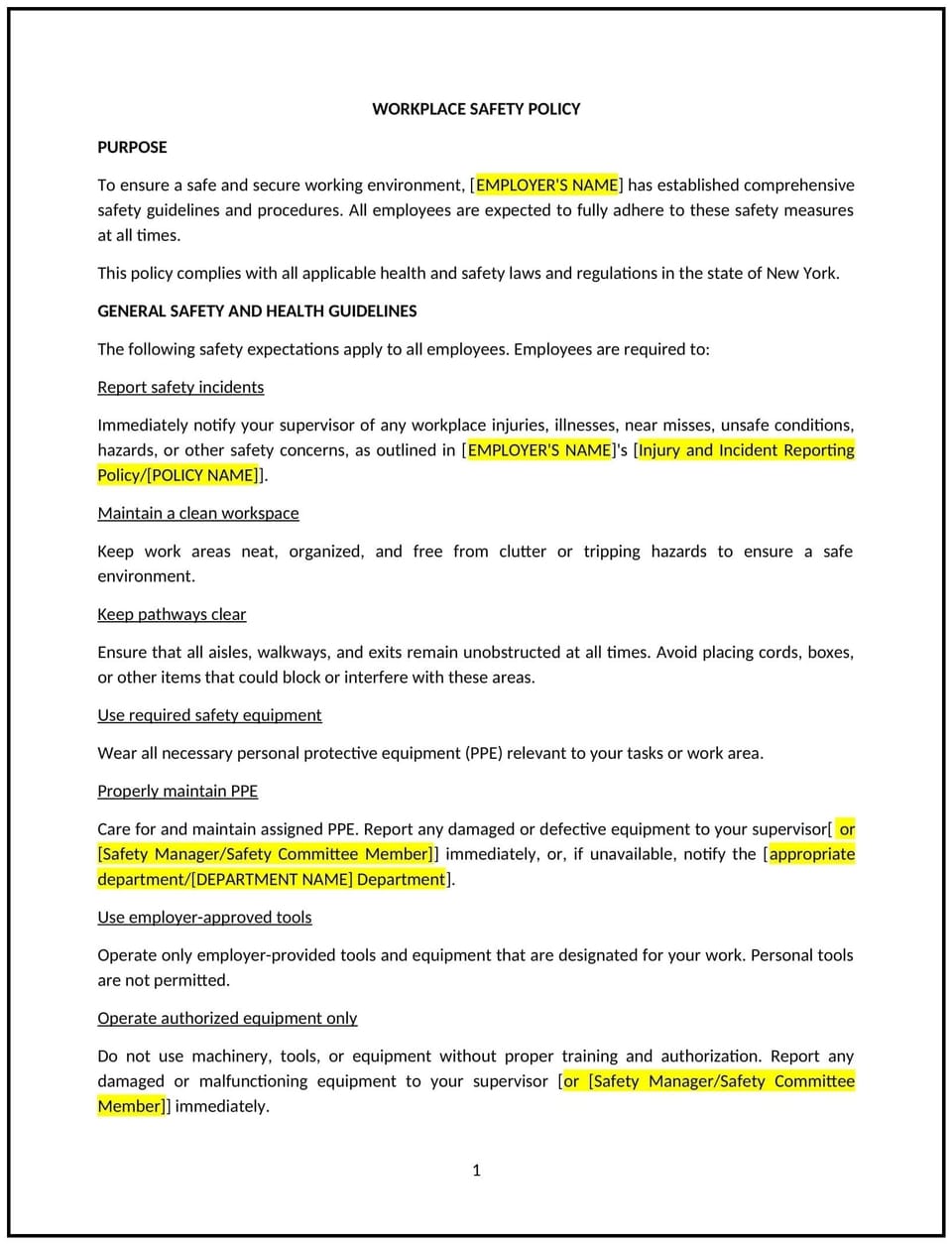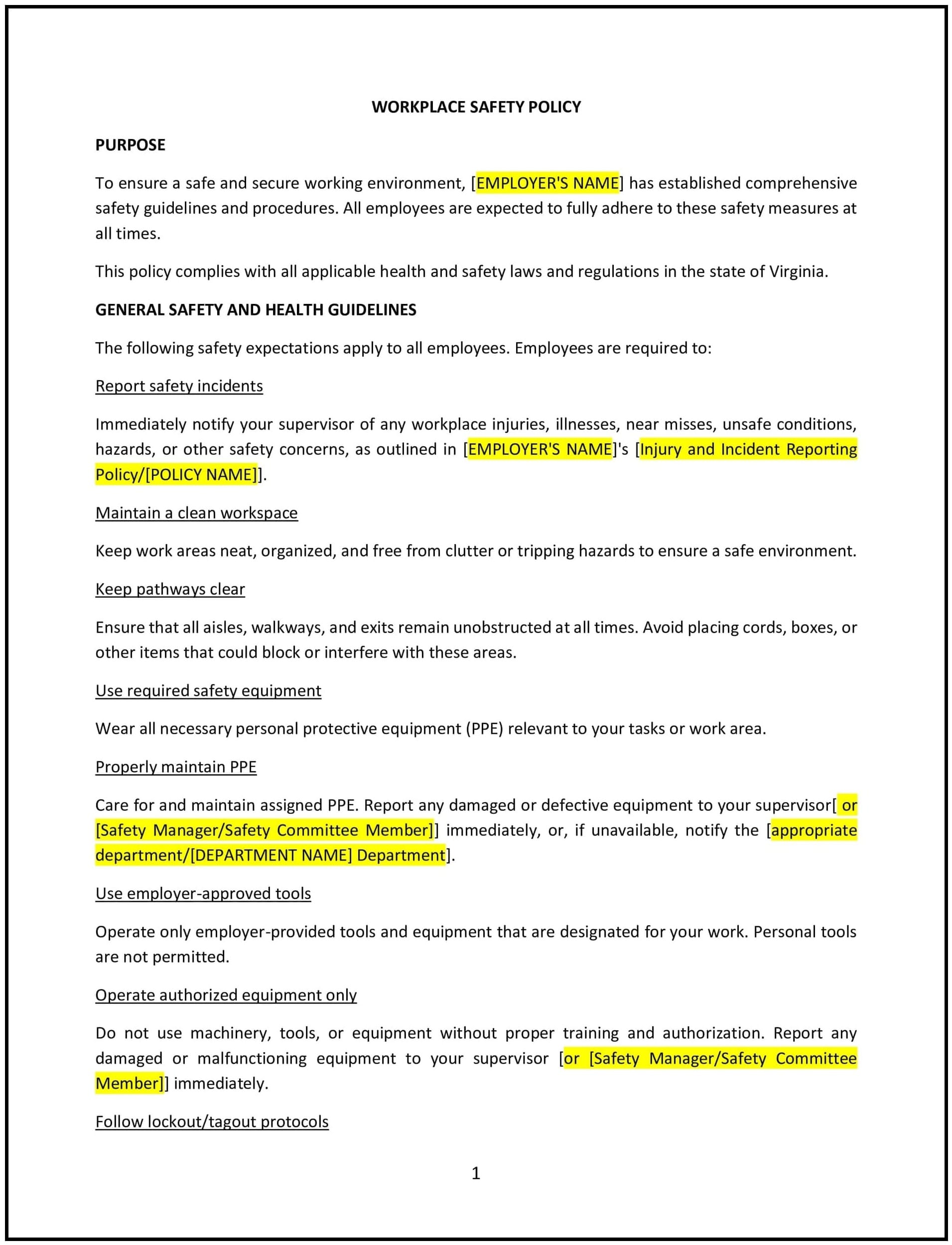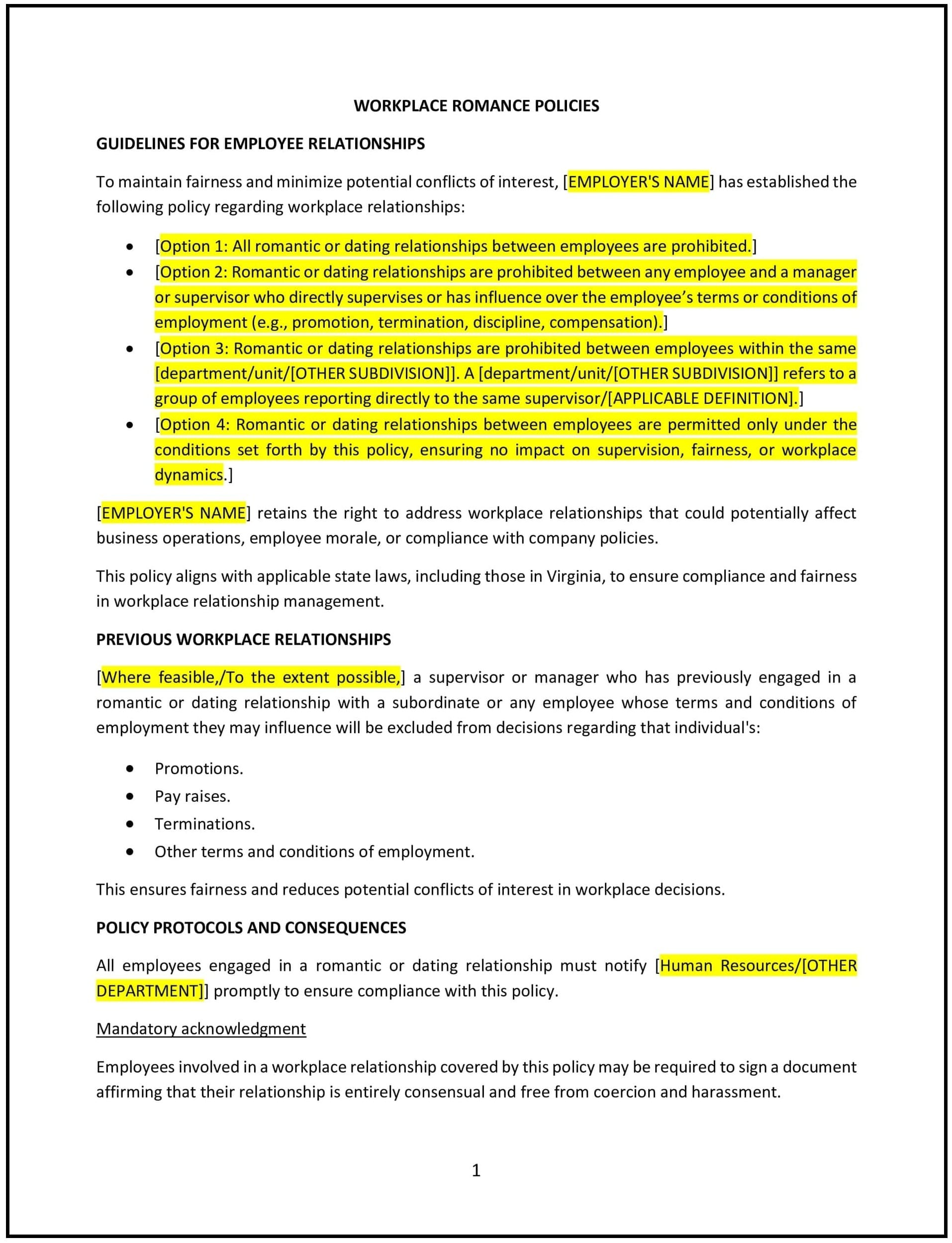Workplace safety policy (New York): Free template

Workplace safety policy (New York)
This workplace safety policy is designed to help New York businesses establish clear guidelines for maintaining a safe and healthy work environment. Whether businesses are addressing workplace hazards, ensuring employee well-being, or complying with safety regulations, this template provides a structured approach to managing workplace safety and preventing accidents.
By adopting this template, businesses can mitigate risks, foster a culture of safety, and ensure compliance with occupational health and safety regulations.
How to use this workplace safety policy (New York)
- Define safety standards: Clearly outline the safety practices and standards that employees must follow, including safe use of equipment, proper handling of materials, and adherence to emergency procedures.
- Address hazard identification: Establish procedures for identifying and assessing workplace hazards, and provide a process for reporting unsafe conditions or practices.
- Set training requirements: Specify the training that employees must complete to ensure they understand workplace safety protocols, including safety drills, equipment use, and hazard recognition.
- Outline safety procedures: Provide detailed instructions on what to do in case of emergencies, accidents, or injuries, including evacuation plans, first aid procedures, and how to report incidents.
- Set accountability: Clearly define the responsibilities of managers, supervisors, and employees in maintaining a safe work environment and ensuring compliance with safety rules.
Benefits of using this workplace safety policy (New York)
This policy offers several benefits for New York businesses:
- Promotes a safe work environment: A clear safety policy helps prevent accidents and injuries by establishing clear guidelines for workplace safety.
- Reduces liability: By addressing safety concerns and following regulations, businesses can reduce the risk of legal liabilities and workers’ compensation claims related to workplace accidents.
- Enhances employee well-being: Employees who feel safe and supported in the workplace are more likely to be productive, engaged, and satisfied with their jobs.
- Improves compliance: A formal safety policy helps businesses comply with federal and state safety regulations, including OSHA standards, reducing the risk of fines or penalties.
- Boosts company reputation: A business that prioritizes workplace safety fosters a positive reputation with employees, clients, and the public, which can enhance recruitment and retention.
Tips for using this workplace safety policy (New York)
- Communicate clearly: Ensure all employees understand the safety policy and the importance of following safety procedures.
- Provide regular training: Offer ongoing training and safety drills to reinforce safety practices and ensure employees are prepared for emergencies.
- Maintain safety equipment: Regularly inspect and maintain safety equipment such as fire extinguishers, first aid kits, and safety signage to ensure they are in working order.
- Foster a safety culture: Encourage employees to report hazards and participate in safety initiatives, promoting a workplace where safety is everyone’s responsibility.
- Review regularly: Update the policy to reflect any changes in New York state laws, federal regulations, or company operations.
Q: What steps should businesses take to identify workplace hazards?
A: Businesses should conduct regular safety inspections, involve employees in hazard identification, and ensure that employees are trained to recognize potential safety risks in the workplace.
Q: How can businesses ensure employees are trained in safety protocols?
A: Businesses can offer regular safety training sessions, ensure new employees are trained upon hire, and provide refresher courses to keep employees informed about safety standards and procedures.
Q: What are the legal requirements for workplace safety in New York?
A: Businesses are required to comply with federal Occupational Safety and Health Administration (OSHA) regulations and New York state-specific safety laws. The policy should address these requirements and reflect the company's commitment to compliance.
Q: How can businesses handle safety violations?
A: Businesses should establish clear consequences for safety violations, including disciplinary actions. Violations should be addressed promptly to prevent accidents and ensure that safety standards are maintained.
Q: How often should the workplace safety policy be reviewed?
A: The policy should be reviewed annually or whenever there are significant changes in safety regulations, business operations, or workplace safety needs.
This article contains general legal information and does not contain legal advice. Cobrief is not a law firm or a substitute for an attorney or law firm. The law is complex and changes often. For legal advice, please ask a lawyer.


